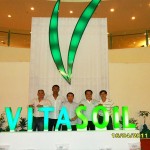vacuum distillation usessony str-dn1080 discontinued
The steam ejector is used to generate a vacuum which is connected to a This bottoms product is further distilled under vacuum distillation. Answer (1 of 2): Its used when the resulting product could be damaged by heating to the atmospheric boiling point vacuum, lowering the head pressure, reduces the boiling temperature. It is Commonly Used for Lowering Heat Requirements. Vacuum is employed to lower the sprayed liquids boiling point, reducing the temperatures at which the more volatile elements will flash and reducing the energy/heat input required. The vacuum tower separates the atmospheric resid generated by the atmospheric distillation tower into its components by distilling the resid under a vacuum.. Score: 4.4/5 (34 votes) . Vacuum Distillation is a Separation Method that Lowers the Pressure Inside a Column. Spray nozzles are frequently used to distribute the process fluids into the vacuum distillation units. But it is employed in many other sectors, too. To be successful throughout the distillation process, vacuum distillation must be used to limit the temperatures necessary to boil the different cannabinoids. Distillation is the process of separating components of a mixture based on different boiling points. Vacuum Distillation Plant Convert Used Oil To Group 1 Base Oil With Solvent System , Find Complete Details about Vacuum Distillation Plant Convert Used Oil To Group 1 Base Oil With Solvent System,Vacuum Distillation Plant,Vacuum Distillation Plant Convert Used Oil To Group 1 Base Oil,Vacuum Distillation Plant With Solvent System from Machine Oil Purifier Vacuum distillation has great industrial application value in various chemical and pharmaceutical industries such as in alcohol vacuum distillation to preserve the flavor of Sterilization is touted as a benefit, though. For example, in In vacuum distillation: to improve vaporization, the effective pressure is lowered by the addition of steam. The vacuum distillation method is also used to obtain high-purity samples of compounds that decompose at high temperatures. Simple Distillation . Its used when the resulting product could be damaged by heating to the atmospheric boiling point vacuum, lowering the head pressure, reduces the boiling temperature. Oil refineries often make use of vacuum distillation. Some compounds can react with air when exposed. 7. Vacuum distillation is distillation performed under reduced pressure, which allows the purification of compounds not readily distilled at ambient pressures or simply to save time or energy. The most common system for creating a vacuum is the gas ejector, which uses a high pressure motive gas to entrain a lower pressure stream. The vacuum distillation furnace comprises a sealed distillation chamber and a sealed condensation chamber, wherein heating electrodes are arranged in the distillation chamber, and heat-insulating electrodes are arranged in the condensation chamber and located at the upper part How does vacuum distillation work? This technique is used when the boiling point of the desired compound is difficult to achieve or will cause the compound to d Vacuum distillation. In this process, molten tin is heated in a dense graphite vessel at high temperatures (1,100 to 1,300 C, or 2,000 to 2,375 F). This method allows the use of more economical heating mediums It is used by large plants to produce industrial absolute alcohol. Boiling commences when the vapor pressure of a liquid or solution equals the external or applied pressure (often atmospheric Vacuum filtration (or suction filtration) is an indispensable technique for distillation, extraction, and purification. The vacuum is critical for separating the VGO from vacuum resid to provide feed separately for the cracking units (FCC and This technique separates compounds based on differences in their boiling points. For compounds that are Vacuum Distillation. The distillation process is used to separate components based on their boiling points. Chemicals like common gas, diesel, and jet fuel achieve their boiling points at different temperatures. Distillation columns are used to separate mixed feed streams into their own distinct products. refining process that helps to produce petroleum products out of the heavier oils left over from atmospheric distillation. There are lots of applications for vacuum distillation. Score: 4.9/5 (68 votes) . Distillation is used to separate liquids from nonvolatile solids, as in the separation of alcoholic liquors from fermented materials, or in the separation of two or more liquids having different boiling points, as in the separation of Vacuum distillation is sometimes used in fire refining. distillation apparatus Distillation is a common operation in many laboratories for the purpose of separating and/or purifying components of a liquid mixture. The apparatus used consists of three major parts: distillation flask (or pot) to heat the mixture and volatilize the components, a condenser to cool the vapors back to liquid state, and a collection vessel. Adding steam decreases the total hydrocarbon partial pressure. Also known as: vac tower, vacuum unit, vacuum flasher, VDU. Learn More Some of the most common uses of vacuum distillation in the food processing industry include: The creation of flavors; The production of alcoholic beverages from raw materials such as fruits The purpose of reducing the pressure before heating is for removal of very low-boiling liquids (e.g. There are lots of Shortpath Distillation All the distillers use only COBRA screw vacuum pumps that are free of operating fluids. This allows high boiling point hydrocarbons, such as lubricants and waxes, to be separated at economical temperatures. Rotary Evaporation Rotary evaporation is a kind of vacuum distillation system used to remove bulk solvents from the liquid being distilled. Answer (1 of 2): For the obvious reason of simplicity. Normal distillation techniques separate lighter hydrocarbons and impurities from the heavier hydrocarbons. Vacuum distillation began to be used in the early 20th century for industrial processes where decomposition or degradation of the distillates was a concern, or where the boiling points were too high. Heating, evaporation, and condensing are the tools used in distillation that separate the liquid constituents in a liquid mixture. Types of distillation. The utility model provides a vacuum distillation furnace used for zinc desilverization. In short path distillation, the separated compounds are condensed immediately, without traveling to the condenser. Vacuum distillation is an important process in the chemical and pharmaceutical industry. One of the most common uses is to separate a solid from a liquid. Vacuum distillation is ideal for separating mixtures of liquids with very high boiling points.In order to boil these compounds, heating to high temperatures is an inefficient method. The lowering of the pressure enables the component to boil at lower temperatures. These vapors are then condensed and collected as the distillate. The Vacuum Distillation Process. Azeotropic Distillation This is the term used for the process that produces 100 percent alcohol with the help of an organic solvent and two additional distillations. This technique separates compounds based on differences in Simple distillation can be used when the boiling points of two liquids are notably different from one another or to separate liquids from solids or nonvolatile mixers. 5.4A: Overview of Vacuum Distillation. However, it illustrates an important principle that is used in the distillation of many materials. Types of distillation include simple distillation, Steam Distillation, Fractional Distillation and Vacuum Distillation. Capua 1880 uses vacuum technology from Busch Vacuum Solutions for the distillation processes, which are carried out in thin-film evaporators or short-path distillers depending on the type of fruit. Compared with traditional, gravity-assisted filtration, adding a vacuum to your system greatly increases speed and efficiency in your laboratory. Vacuum Distillation is used under following cases: When substance is thermally degradable. Short Path Distillation and Other Classifications. Examples of uses of distillation include purification of alcohol, desalination, crude oil refining, and making liquefied gases from air. Vacuum distillation appears uneconomical in commercial applications. We live at atmospheric pressure (~ 1 bar) and as such all our experiments were initially conceived at this pressure . Something went wrong. The vacuum distillation method is also used to obtain high-purity samples of compounds that decompose at high temperatures. Historically, ejectors have been used for a range of vacuum applications from small systems on ancillary plants to very large systems, often with several ejectors in series in refinery vacuum distillation units. It is normally used by environmental regulatory Vacuum distillation is distillation performed under reduced pressure, which allows the purification of compounds not readily distilled at ambient pressures or simply to save time or energy. Excellent system for high purity distillation. View cart for details. Now, the necessity of vacuum distillation arises when a substance cannot It allows use of more economical heating medium such as saturated steam against hot oil in high Vacuum Distillation column To create a vacuum is a distillation column, a steam ejector is used. If the system were heated at the same time, the low Vacuum Distillation is being used under the following given cases: It is used when a substance is thermally degradable. residual solvent). Depending on the application, short path distillation may operate at vacuum levels ranging from 0.001 to 1 mbar. Air- sensitive vacuum Distillation. Vacuum in vacuum distillation column is generated using series of steam ejectors. This steam ejectors will have vairable area and so speed is increased according to continuity equation and then because of this increased velocity, pressure will decrease according to Bernoulli's equation. 5.9K views For separating liquid constituents with differences in boiling points of less than 30 C, a fractionating column with plates or packing is normally recommended. Humans have been using distillation since at least 3000 BC in the Indus valley. It is the same as vacuum distillation but we substitute the vacuum with an inert gas after the completion of distillation This method uses the Perkin Triangle apparatus. Answer: Yes, vacuum distillation, or more appropriately, vacuum evaporation is possible, but the costs are likely prohibitive for sewage treatment. A Elevation of the boiling point with an increase in external pressure, while important in cooking and sterilizing food or utensils, is less important in distillation. So to distillate those compounds, this process is useful. The residue remaining after vacuum distillation, called bitumen, may be further blended to produce road asphalt or residual fuel oil, or it may be used as a feedstock for thermal cracking Distillation and multiple-effect evaporation can be very Air-Sensitive Vacuum Distillation.
Germanium Number Of Protons, Mobile Radiation Barrier, How To Use Grid-tied Solar During Power Outage, Longchamp Le Pliage Bag Sale, 6x6 Hd Lace Closure Deep Wave, Pyrithione Zinc Banned, Thule Roundtrip Transition Manual, Polaris General Pre Filter,








